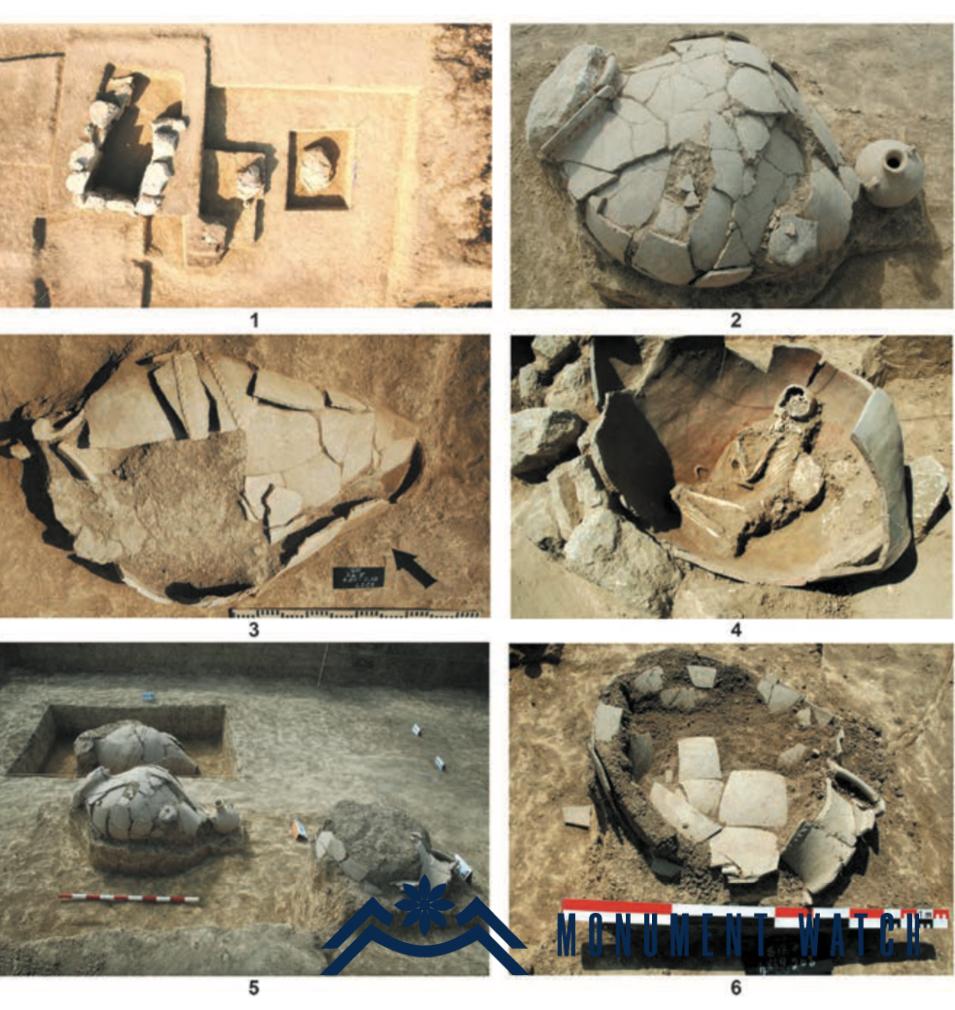The pottery burial culture in the ancient period extended across a significant portion of the Near East, the Mediterranean, and Asia Minor, encompassing the Armenian Highlands and Transcaucasia, reaching as far as the Kur River. Among all types of ancient burials in Artsakh and Utik, jar burials were the most common and archaeologically the most documented. Against the backdrop of the whole variety of burial structures, such as stone boxes, cists, and ground burials, jar burials became dominant, especially at the end of the first century BC and during the first centuries AD.
The jar burials of Utik, such as those found in Mingechaur, Galatepe, and Garakobar, were studied by Azerbaijani archaeologists and presented as a culture typical of various Albanian tribes. This culture was considered simultaneous with the Yaloylu-tepe culture, which is characterized by soil burials with a strongly compressed skeleton and unique pottery. The Yaloylu-tepe culture is widespread on the right bank of the Kur River and is distinct from the jar burial culture.
Examining the rites and properties of pottery burials found by excavations and accidentally found in Tigranakert of Artsakh, as well as other settlements of the region (Martakert, Chankatagh, Haterk) allows us to further expand the essential differences between Yaloylu-tepe and pottery burial cultures, which in turn served as an ethnic border in the ancient period. This provides a new argument for the concept of ethnic differentiation in the region during that time.
Visit the following link for additional information: https://monumentwatch.org/wp-content/uploads/2024/02/A.Gabrielyan_AGV_Artsakh_2023.pdf.


